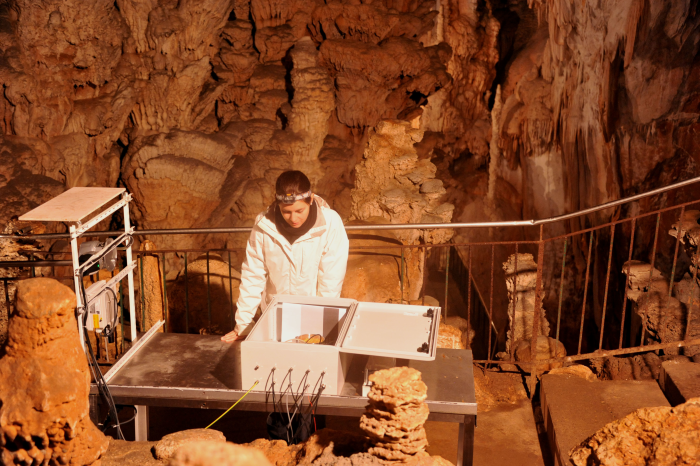



The drawings and engravings of the Chauvet Cave not only demonstrate an exceptional artistic and technical refinement, but they are also among the oldest known (360 centuries). Despite their fragility, these artifacts are perfectly preserved in the protective environment of the cave. Because of the exceptional interest in this prehistoric cave, it has been added to the UNESCO World Heritage List.
Since the cave's discovery in 1994, conservation actions have been aimed at preserving the natural conditions of the cave and its external environment. The goal was to limit development and site visits to what was strictly necessary for its study, while continuously measuring the environmental conditions to control the impacts on the microclimate of the cave. With the use of robust, precise, and high-resolution measurement equipment, the reliable recorded data make it possible to establish a benchmark, monitor natural changes, and be alert to possible climatic drifts.
The microclimatic monitoring of the Chauvet Cave is ensured by a system of sensors (temperature, barometric pressure, and CO2) in the cave networked to a CR3000 datalogger. At the surface level, a Campbell Scientific weather station (CR1000 datalogger with rainfall, air temperature, and barometric pressure sensors) measures the external parameters. Seven kilometers away, the Aven d'Orgnac Cave is instrumented identically to be a mirror site of the Chauvet Cave. The data are recorded synchronously every 15 minutes in both underground sites and at the weather station.
With this type of instrumentation, the effects of changes in the outdoor climate are now clearly identified in many caves. Over time, the data will be fully evaluated to determine how, and to what degree, environmental changes impact the preservation of our underground heritage—whether natural (crystal and concretion caves) or cultural (prehistoric decorated caves). Several other French caves are equipped with Campbell Scientific monitoring equipment for long-term studies. For example, the Gouffre d’Esparros uses a CR6-based system, and the Marsoulas Cave is monitored using a CR3000-based system.
For additional information about the caves and the conservation efforts to protect them, visit the following sites:
Additional information is also available at ScienceDirect: "Hydrogeological control on carbon dioxide input into the atmosphere of the Chauvet-Pont d'Arc cave." While the abstract is publicly available, access to the full article would require an account or payment.
Case Study Summary
Application
Climatic measurements in natural (crystal and concretion) or cultural (prehistoric decorated) cavesLocation
Vallon-Pont-d'Arc, Aven d'Orgnac, FranceProducts Used
CR3000 CR1000 PT100/3 AM16/32BContributors
François Bourges, Geology Environment CouncilParticipating Organisations
DRAC Auvergne Rhône-AlpesMeasured Parameters
Temperature, atmospheric pressure, CO2, precipitationRelated Website
Geology Environment CouncilView the PDF